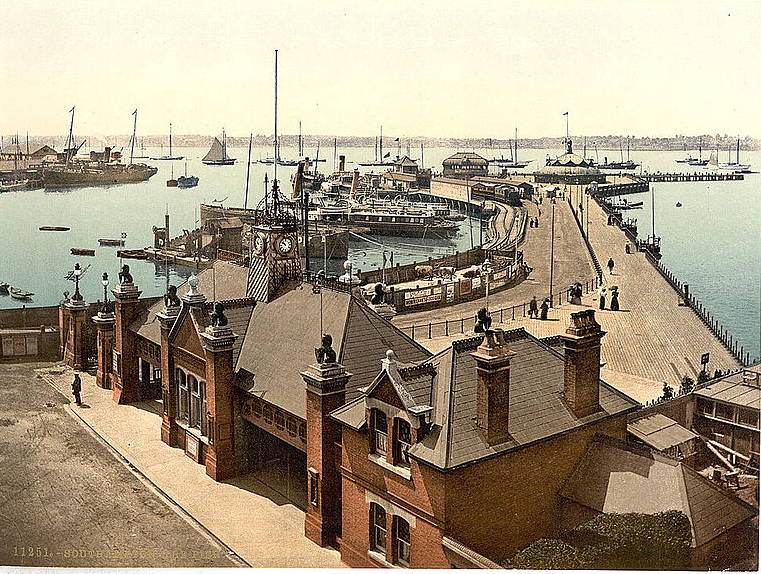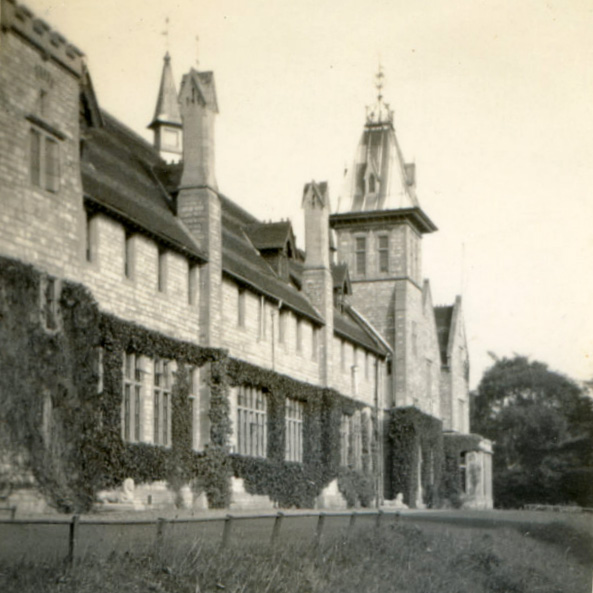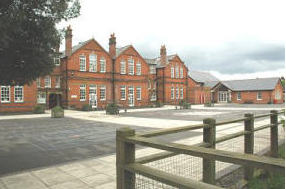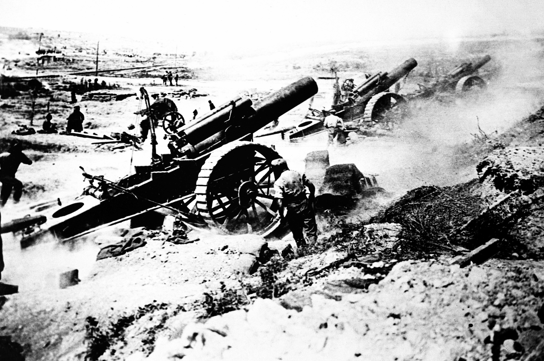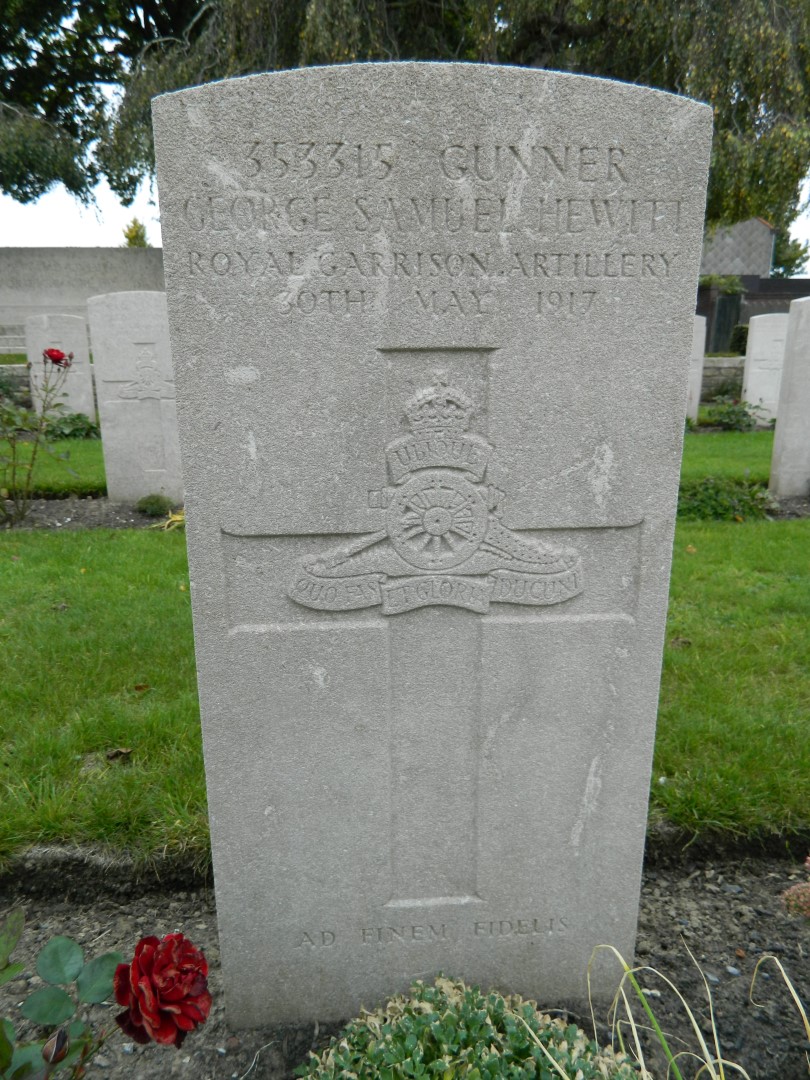George Samuel Hewitt
Gunner George Samuel Hewitt of the Royal Garrison Artillery 290th Siege Battery, Regimental Number 353315, was killed in action on 30th May 1917 and is buried at Vlamertinghe Military Cemetery in Belgium.
Early Life
George was born sometime in the last three months of 1882 to George and Anne (called Annie, née Pollard) Hewitt. In the census of 1891 the family was living at 13, Onslow Road, Southampton, where they remained for at least the next twenty years. George Robert Bevis (35) was a hairdresser, stationer and toy retailer, and Annie (33) assisted him. George (8) was the elder of two children, having a younger sister Annie Amelia (6). By 1901, George Senior had stopped selling toys and George Junior at 18 was employed as a pupil teacher. By the 1911 census George Senior had added fancy goods to the list of items he was selling, although Anne only assisted in the stationery part of the business. George was by now a qualified schoolmaster1 and his younger sister Amelia had followed him into the profession.
A Career in Teaching
George attended Winchester Diocesan Training College from 1903 until 1905. He would have spent at least two years, possibly more, working as a pupil teacher before achieving a place to train as a qualified teacher. Professional training was not compulsory at this time, although it would have the benefit of a better career path and remuneration. (Teaching and Training)
Photograph from the Wintonian Magazine
The time that George spent at Winchester was divided into a Junior (first) and Senior (second) year. As a Junior, George was part of the cricket team that contested the annual Seniors versus Juniors match at Bar End 2, a venue still used for sports fixtures today. He was also in the second XI Football Squad. He did make the first XI in his Senior year, but only for one game. Sporting competition was taken very seriously by most of the students, although observed with humour by others:
This month has seen much energy among certain Juniors who have taken an athletic turn of mind. Every afternoon these would be athletes have been seen to dash energetically along the Terrace and return about half an hour later in a state of moistness.
Part of the College experience was enrolment into the Hampshire Volunteer Force, usually during their first week at Winchester. They would practise drills and learn to fire rifles, as well as going on manoeuvres during the summer break. During his time at College, George was promoted to Lance Corporal.
At the end of his college course George was placed 33rd in the year in his exam results, with an average mark of 46.1%. His best results were in Education and History, and his worst was in Algebra with only 20/100.
By the end of the Senior year, students would be looking for teaching positions and thinking back fondly on the time they spent at Winchester:
Thus we are about to leave this dear old place. The two years that have passed will never be forgotten, and our doing here will soon be existing only in remembrance.
After leaving College, George secured a teaching position at Foundry Road School in Southampton. Sadly, although this school has over a hundred years of history to be proud of, there is no evidence of this on the school website.
In the spring of 1914, George married Amy Ward of Manor House, Romsey, Hampshire.
Photo, right; A modern photograph of Foundry Road School
War Breaks Out
From his War Gratuity record it appears that George enlisted in the Royal Garrison Artillery, 290th Siege Battery, in the month from 31st January 1916. Siege Batteries of the RGA were equipped with heavy howitzers which could send large calibre high explosive shells in a high trajectory. As British artillery tactics developed over the course of the war, the siege batteries were most frequently employed in destroying or neutralising the enemy artillery. They were also used to lay down destructive fire on enemy strongpoints such as ammunition stores, and communication lines behind enemy lines.
The War Diary gives us a summary of the movements of the 290th Siege Battery in the weeks before George died. They left Southampton on 2nd April 1917 and disembarked at Le Havre the following day. On the 7th April the men travelled by train to the railhead at Hopoutre (Flanders), arriving on the 8th, and went into billets at Vlamertinghe on a farm near to a chateau. The next day the guns arrived and were taken to the Siege Park, in preparation for the Battle of Messines 7th-14th June 1917.
The tactical objective of the battle was to oust the Germans from defensive positions on the Messines-Wytschaete Ridge, which would deprive the German 4th Army of the high ground to the south of Ypres. This was considered to be an essential precursor to the success of the planned advance in the low lying Ypres salient, which was in full view and easy reach of enemy guns on the ridge. The British 2nd Army had devised a very sophisticated centralised artillery plan following the lessons learned from the battle of Arras in April 1917. British artillery had improved their accuracy significantly and target finding became systematic. They used a combination of field survey, gun calibration and a more accurate map. In addition they had new sound-ranging equipment and better organisation of flash-spotting and the communication of results through the Army Report Centre at Locre Chateau. Second Army counter-battery artillery bombardments increased from 12 in the week ending 19th of April to 438 in the last ten days before the attack.
The Preliminary bombardment started on 30th May, the day George was killed in action.
On 30 May the preliminary bombardment began. It was the most powerful of the war and this time there was no shortage of shells. They lay dumped near the guns by the hundred thousand, and there was a gun for every seven yards of front. 3
The War Diary for 30th May states:
10:45am 300 rounds fired at front line trench with visual observation from HILLTOPshooting satisfactory during bombardment.
There is no reference in the War Diary to suggest what happened that caused George’s death on that day. He is buried in Vlamertinghe Military Cemetery, near Ypres, Plot VII Row C Grave 6. His wife chose the inscription Ad finem fidelis 4. By the time probate was settled Amy Hewitt was living at 101 Charlton Road, Southampton. George left her £257 6s. George is also remembered on the Southampton Cenotaph Roll of Honour.
Researcher and Author: Dee Sayers
Hewitt’s Signature From The Students’ Register
Footnotes
- George attended Winchester Training College from 1903 until 1905. After his training was complete he would have completed two years teaching before he was considered to be a fully qualified, or certificated teacher.
- Bar End is still used as the University sports field, on the east of the city, approximately 1 ½ miles away from the main campus. The land was bought by the College in 1934 having previously been hired for playing home fixtures against visiting teams. ( A History of King Alfred’s College, Winchester 1840-1980 by Martial Rose).
- They Called It Passchendaele, by Lyn Macdonald, Paperback edition first published 1983, page 33.
- Faithful to the last
Sources
Alwyn Ladell photography. (2018). Home page. [online] Available at: https://www.flickr.com/photos/alwyn_ladell/sets/72157665876163520/ [Accessed 2018].
Ancestry (2018). Home page. [online] Available at: www.ancestry.co.uk [Accessed 2018].
Brian Evans-Jones (2012). Travelling through Time at Foundry Lane Primary School. [online] Available at: www.brianevansjones.com/2012/10/travelling-through-time-at-foundry-lane-primary-school/ [Accessed 2018].
Commonwealth War Graves Commission, (2018). Home page. [online] Available at www.cwgc.org/ [Accessed 2018].
Lidgitt, P. and Naylor, P. (2018). Vlamertinghe photographs.
The Long Long Trail, (2018). Welcome to the long long trail. [online] Available at: http://www.longlongtrail.co.uk/ [Accessed 2018].
Macdonald, L. (1978). They Called It Passchendaele. Unknown: Michael Joseph Limited.
National Union of Teachers. (1920). War Record 1914“1919. A Short Account of Duty and Work Accomplished During the War. London: NUT.
Southampton Cenotaph (2016). George Samuel Hewitt. [online] Available from: https://southampton cenotaph.com/george-samuel-hewitt/ [Accessed 2018].
Vickers, J. University of Winchester Chapel Memorial Rail image.
Wikimedia (2018). Royal Pier, Southampton circa 1890 – image. [online] Available at: https://commons.wikimedia.org/wiki/File:Royal_Pier,_Southampton_circa_1890.jpg [Accessed 2018].
Wikipedia (2018). Battle of Messines (1917). [online] Available at: https://en.m.wikipedia.org/wiki/Battle_of_Messines_(1917) [Accessed 2018].
Wikipedia (2018) File: British 39th Siege Battery RGA Somme 1916. [online] Available at: https://commons.wikipedia.org/wiki/File:British_39th_Siege_Battery_RGA_Somme_1916.jpg [Accessed 2018].
| University of Winchester Archive “ Hampshire Record Office | ||
| Reference code | Record | |
| 47M91W/ | P2/4 | The Wintonian 1899-1900 |
| 47M91W/ | P2/5 | The Wintonian 1901-1902 |
| 47M91W/ | P2/6 | The Wintonian 1903-1904 |
| 47M91W/ | P2/7 | The Wintonian 1904-1906 |
| 47M91W/ | P2/8 | The Wintonian 1905-1907 |
| 47M91W/ | P2/10 | The Wintonian 1908-1910 |
| 47M91W/ | P2/11 | The Wintonian 1910-1914 |
| 47M91W/ | P2/12 | The Wintonian 1920-1925 |
| 47M91W/ | D1/2 | The Student Register |
| 47M91W/ | S5//5/10 | Photograph of 5 alumni in Mesopotamia |
| 47M91W/ | Q3/6 | A Khaki Diary |
| 47M91W/ | B1/2 | Reports of Training College 1913-1914 |
| 47M91W/ | Q1/5 | Report and Balance Sheets 1904- 1949 |
| 47M91W/ | R2/5 | History of the Volunteers Company 1910 |
| 47M91W/ | L1/2 | College Rules 1920 |
| Hampshire Record Office archive | ||
| 71M88W/6 | List of Prisoners at Kut | |
| 55M81W/PJ1 | Managers’ Minute Book 1876-1903 | |
| All material referenced as 47M91W/ is the copyright of The University of Winchester. Permission to reproduce photographs and other material for this narrative has been agreed by the University and Hampshire Record Office. | ||


